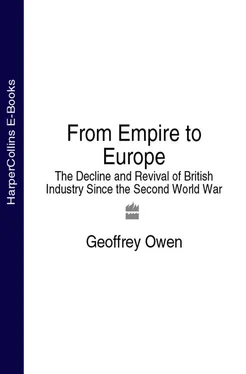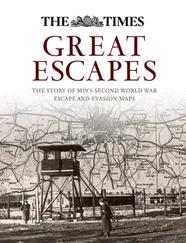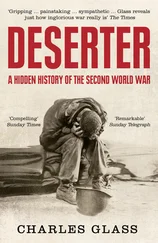
The Decline and Revival of British Industry
Since the Second World War
GEOFFREY OWEN

 Copyright
Copyright
William Collins
An imprint of HarperCollins Publishers Ltd.
1 London Bridge Street
London SE1 9GF
www.harpercollins.co.uk
First published in Great Britain by HarperCollins Publishers 1999
Copyright © Geoffrey Owen 1999
Geoffrey Owen asserts the moral right to
be identified as the author of this work
A catalogue record for this book is available from the British Library
All rights reserved under International and Pan-American Copyright Conventions. By payment of the required fees, you have been granted the nonexclusive, nontransferable right to access and read the text of this ebook on-screen. No part of this text may be reproduced, transmitted, downloaded, decompiled, reverse-engineered, or stored in or introduced into any information storage and retrieval system, in any form or by any means, whether electronic or mechanical, now known or hereinafter invented, without the express written permission of HarperCollins ebooks
HarperCollins Publishers has made every reasonable effort to ensure that any picture content and written content in this ebook has been included or removed in accordance with the contractual and technological constraints in operation at the time of publication
Source ISBN: 9780006387503
Ebook Edition © JANUARY 2017 ISBN: 9780008100889
Version: 2017-01-18
Cover
Title Page
Copyright
1 Falling Behind and Catching up
PART I
Historical Background
2 The Consequences of Coming First
3 Britain, Germany and France after the Second World War
PART II
Industries and Firms
4 Textiles: Misdirected Modernisation
5 Shipbuilding: Imprisoned by History
6 Steel: The Thatcher Effect
7 The Globalisation of the Paper Industry
8 Engineering: From World Leader to Niche Player
9 The Motor Industry: An Avoidable Disaster
10 Electronics: A Shared European Failure
11 Aerospace: Partnership with Government
12 Chemicals: The Birth, growth and Break-up of a National Champion
13 Pharmaceuticals: A Winning Formula
PART III
Institutions and Policies
14 The Financial System
15 Training, Education and Culture
16 Trade Unions and Labour Relations
17 The Role of Government: From Consensus to Competition
18 Conclusion
Afterword
Notes
Select Bibliography
Index
Acknowledgements
About the Author
About the Publisher
ONE
Falling Behind and Catching Up
In the summer of 1995, a ceremony was held at the Aylesford paper mill in Kent, one of Britain’s largest paper-making sites, to mark the successful commissioning of a newsprint machine. In forest-rich countries such as Canada or Finland, this would have been an unremarkable event. But for Britain the Aylesford project had a special significance. It was the first new machine to be built at the mill for more than thirty years. Based on recycled paper, it produced newsprint which was competitive in cost and quality with imports. The project was financed by two non-British companies, one from Sweden and the other from South Africa. By investing £250m at Aylesford, they were contributing to the revival of an industry which twenty years earlier had seemed in the grip of irreversible decline.
What happened in paper-making during the 1980s and 1990s illustrates the central theme of this book – the delayed modernisation of British industry. For the first decade after the war British paper-makers led a comfortable existence. Domestic demand was strong, and import competition was restrained by tariffs and quotas. These easy conditions came to an abrupt end in 1959 when the Conservative government under Harold Macmillan decided to participate in the European Free Trade Association (EFTA). This was a grouping of countries outside the six-nation Common Market, and it included Sweden and Finland, both of which had large, efficient paper industries based on cheap electricity and ample supplies of wood. 1
As tariffs among the EFTA countries came down, the Nordic paper producers used their cost advantage to increase their exports to Britain. British firms strove to come to terms with a difficult trading environment. Mills and machines were closed down, and some of the leading British companies lost faith in the industry’s future. But the economics of paper-making in Britain were not as unfavourable as the pessimists supposed. For some grades of paper, being near to the market turned out to be more important than being near to the forests. In addition, Britain had a man-made ‘forest’ of its own: improvements in recycling technology created new opportunities for using waste paper instead of imported woodpulp as the feedstock for paper production. The gloom began to lift in the early 1980s, and over the next fifteen years a remarkable transformation of the industry took place, involving new investment and changes of ownership. Some of the new projects, like the Aylesford newsprint machine, were undertaken by foreign companies. But there was also a new spirit of confidence among the surviving British-owned firms, targeting sectors of the market where a UK-based producer could compete successfully against imports.
A similar chain of events took place in other industries: profitable growth in the first few years after the war, a struggle to cope with increasing international competition in the 1960s and 1970s, and, finally, integration into the world market. The form which integration took varied according to the circumstances of each industry and the amount of ground that had been lost in earlier years. The revival of the British motor industry, for example, which had almost been given up for dead at the end of the 1970s, owed a great deal to the decision by three Japanese companies – Toyota, Honda and Nissan – to choose Britain as the site of their first European assembly plants. By the end of the 1990s, after Jaguar had been bought by Ford, Rover by BMW and Rolls-Royce Motors by Volkswagen, virtually the whole of the British motor industry had passed into foreign control. While this was a blow to national pride, the willingness of these companies to invest on a large scale in British car factories was an indication of how much had changed since the dark days of the 1970s.
With or without the involvement of foreign companies, the 1980s saw a vigorous effort throughout British industry to correct past mistakes and to build defensible positions in the world market. Guest Keen and Nettlefolds (GKN) was an old-established company which had diversified in the inter-war years from its original base in steel-making into a wide range of steel-using businesses, and it continued to do so in the 1950s and 1960s. Most of its sales were to customers in Britain and the Commonwealth. In the second half of the 1970s, when competition increased and profits came under pressure, a new approach was necessary. As Trevor Holdsworth, chairman of the company from 1979 to 1986, put it later: ‘We were drifting uncertainly into the future without a clear strategy. A new generation of senior executives was emerging and we set about trying to make sense of our inheritance. We had to find new products, new technology and we had to spread internationally.’ 2The chosen path for expansion was in vehicle components, and over the next decade GKN converted itself into a leading supplier to the world motor industry, with a strong market position in Continental Europe and the US. Other companies went through similar upheavals. The common elements were specialisation and internationalisation, and a drive to raise manufacturing efficiency closer to the best world standards.
Читать дальше



 Copyright
Copyright










